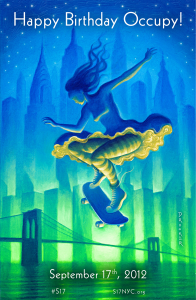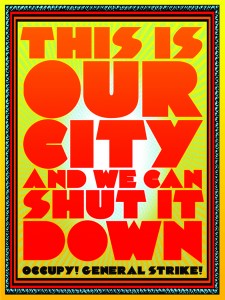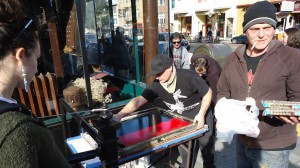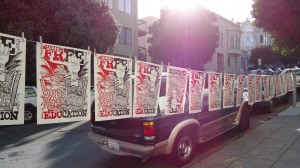Usually, you have to wait a few years for a museum to get around to evaluating the defining art of a political movement, but the Yerba Buena Center for the Arts in San Francisco jumped right in with "Occupy Bay Area." In fact, it's a fair bet the exhibit will end (October 14th) before the movement does.
There is a lot of local art to point to. Anybody who attended (or covered) a protest will recall a sea of posters, some hastily drawn on whatever piece of cardboard was handy. Others showed a sophisticated, even professional artistic eye, and that's what caught the attention of curator Betti-Sue Hertz. "I realized there was something really special going on."
The bright colors fairly pop off the center's plain white walls. Juxtaposed against photos and video of Occupy protests, it's pretty clear how the poster art fed into the energy of the crowd, and vice versa. "The range of styles is incredibly fascinating," says Hertz, noting that many artists consciously drew on the legacies of historical labor and social movements: the Free Speech Movement at UC Berkeley (1964), the five-month long student-led strike at San Francisco State (1968), the Native American Alcatraz Occupation (1969), and the decade-long ARC/AIDS Vigil at United Nations Plaza (1985-1995).
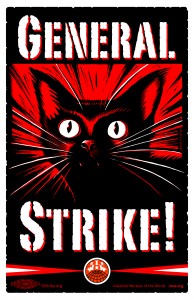
Then there's the more recent General Strike poster made by artist Eric Drooker.
"I was contacted by the IWW, the Industrial Workers of the World, America’s oldest and most radical labor union," Drooker says. "They were calling for a general strike in Madison, Wisconsin... when the Occupy movement really started to kick in. When people were occupying the state capitol building. And it was extremely radical because you had not only the local school teachers, you had the local anarchists occupying... in solidarity with the local policeman’s union!
